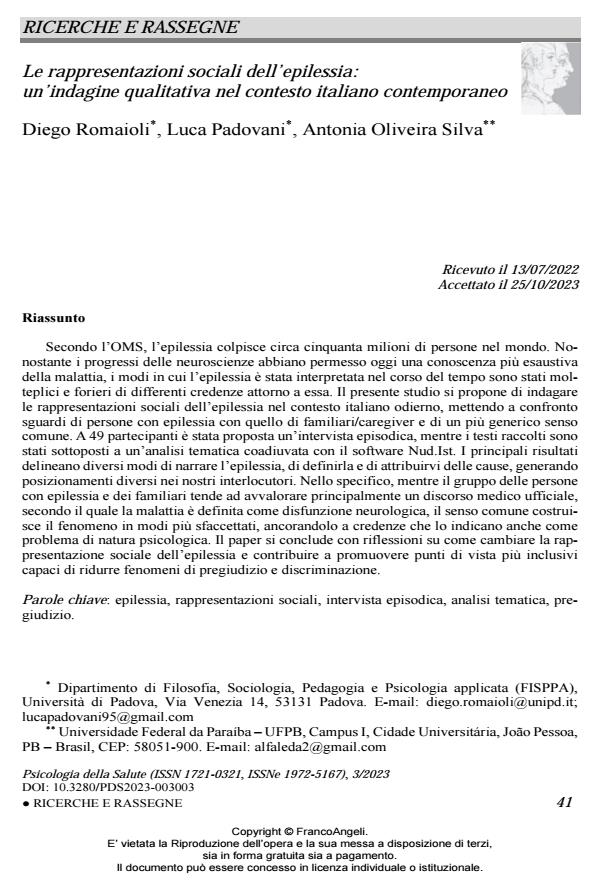The social representations of epilepsy: A qualitative inquiry in the contemporary Italian context
Journal title PSICOLOGIA DELLA SALUTE
Author/s Diego Romaioli, Luca Padovani, Antonia Oliveira Silva
Publishing Year 2023 Issue 2023/3
Language Italian Pages 23 P. 41-63 File size 280 KB
DOI 10.3280/PDS2023-003003
DOI is like a bar code for intellectual property: to have more infomation
click here
Below, you can see the article first page
If you want to buy this article in PDF format, you can do it, following the instructions to buy download credits

FrancoAngeli is member of Publishers International Linking Association, Inc (PILA), a not-for-profit association which run the CrossRef service enabling links to and from online scholarly content.
According to the WHO, epilepsy affects about fifty million people worldwide. Although advances in neuroscience have now allowed a better understanding of this disease, the ways in which epilepsy has been interpreted over time are multiple and harbingers of different beliefs. The present study aims to inquiry the social representations of epilepsy in contemporary Italian context, comparing viewpoints of people with epilepsy, with the ones of family mem-bers/caregivers and a general common sense. Forty-nine episodic interviews were collected, and a thematic analysis were conducted on texts with the software Nud.Ist. The main results outline different ways of narrating epilepsy, generating different positionings in our partici-pants. Specifically, while the group of people with epilepsy and family members tends to pri-marily endorse an official medical discourse, according to which the disease is defined as a neurological dysfunction, common sense constructs the phenomenon in more multifaceted ways, anchoring it in beliefs that point to it as a psychological problem. The paper concludes with reflections on how it is possible to change the social representation of epilepsy and help promote inclusive views capable of reducing phenomena of prejudice and discrimination.
Keywords: epilepsy, social representations, episodic interview, thematic analysis, prejudice.
Diego Romaioli, Luca Padovani, Antonia Oliveira Silva, Le rappresentazioni sociali dell’epilessia: un’indagine qualitativa nel contesto italiano contemporaneo in "PSICOLOGIA DELLA SALUTE" 3/2023, pp 41-63, DOI: 10.3280/PDS2023-003003